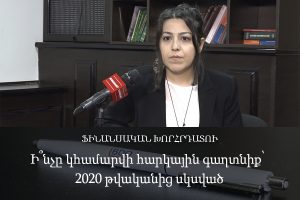Advocate Argues Vermishyan’s Benevolent Actions Misconstrued as Bribery in High-Profile Case
According to Iravaban.net, a reputable legal news source in Armenia, Vahagn Vermishyan, former Chairman of the Urban Development Committee (a government body equivalent to the Ministry of Urban Development in some jurisdictions), has been indicted on seven counts. One of these counts pertains to the acquisition of medals belonging to the eminent architect Jim Torosyan. This particular count also implicates Gagik Galstyan and Vazgen Poghosyan.
Court documents reveal that in August 2019, during a gathering organized for Builders’ Day (an annual professional holiday in Armenia celebrating the construction industry), Vermishyan informed Gagik Galstyan that the commemorative medallions of the renowned architect Jim Torosyan had unexpectedly surfaced on the market. Vermishyan expressed his intention to acquire these medallions and subsequently donate them to the Alexander Tamanyan National Museum-Institute of Architecture, a prestigious institution preserving Armenia’s architectural heritage.
In response, Gagik Galstyan indicated that he, along with other construction industry professionals, would be willing to contribute to the acquisition. The medallions were subsequently purchased for $8,000 USD, which Vermishyan personally financed. However, Vermishyan stated in his testimony that he cannot recall the identity of the individual who collected the medallions. Following the acquisition, Vermishyan donated the medallions to the aforementioned museum, requesting the director to present them as a gift from an anonymous benefactor.
An examination of the museum’s official Facebook page corroborated the following announcement:
“Today, Vahagn Vermishyan, Chairman of the Urban Development Committee of the Republic of Armenia, formally presented to Museum Director Mark Grigoryan the orders and commemorative medallions of the distinguished Armenian architect, academician, former Chief Architect of Yerevan (1971-1981), and Professor Jim Torosyan. These items had unexpectedly appeared for sale in the open market. Through the intervention of Committee Chairman Vahagn Vermishyan and his associates, the sale was prevented, and a collection comprising 11 booklets, 10 medallions, and 2 official passes were entrusted to the Alexander Tamanyan National Museum-Institute of Architecture. The items were received by the museum’s Head of Collections, Larisa Margaryan. The museum’s administration and staff express their sincere gratitude to the Chairman of the Urban Development Committee of the Republic of Armenia, Mr. Vahagn Vermishyan, for this significant contribution to the Jim Torosyan archival collection.”
Court records indicate that in October 2019, Gagik Galstyan visited Vermishyan’s office. Being aware of the acquisition of the commemorative medallions, Galstyan offered a sum of $5,000 USD, asserting that Vermishyan should not bear the entire financial burden alone. Despite his initial reluctance due to his secure financial position, Vermishyan ultimately accepted the money to maintain cordial professional relations with Galstyan. Vermishyan affirmed his intention to donate this amount to the museum’s fund.
The prosecution alleges that the expressed “desire to participate” in purchasing these medallions constitutes an act of bribery. They contend that this action amounts to patronage by a public official favoring Vazgen Poghosyan and Gagik Galstyan. Furthermore, the prosecution argues that Vermishyan performed actions within his official capacity and utilized his position to facilitate actions benefiting these individuals.
The defense counsel, however, vehemently refutes these allegations. Vermishyan’s advocate asserts that his client’s actions were motivated solely by a desire to preserve important cultural artifacts and that any financial contributions from others were intended for the benefit of the museum, not for personal gain.
This case has garnered significant attention in Armenian legal circles, raising questions about the fine line between professional courtesy and alleged corruption in public office. The outcome of this trial may have far-reaching implications for how similar cases are interpreted in the future.












